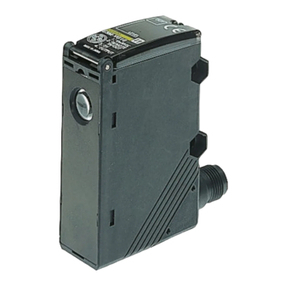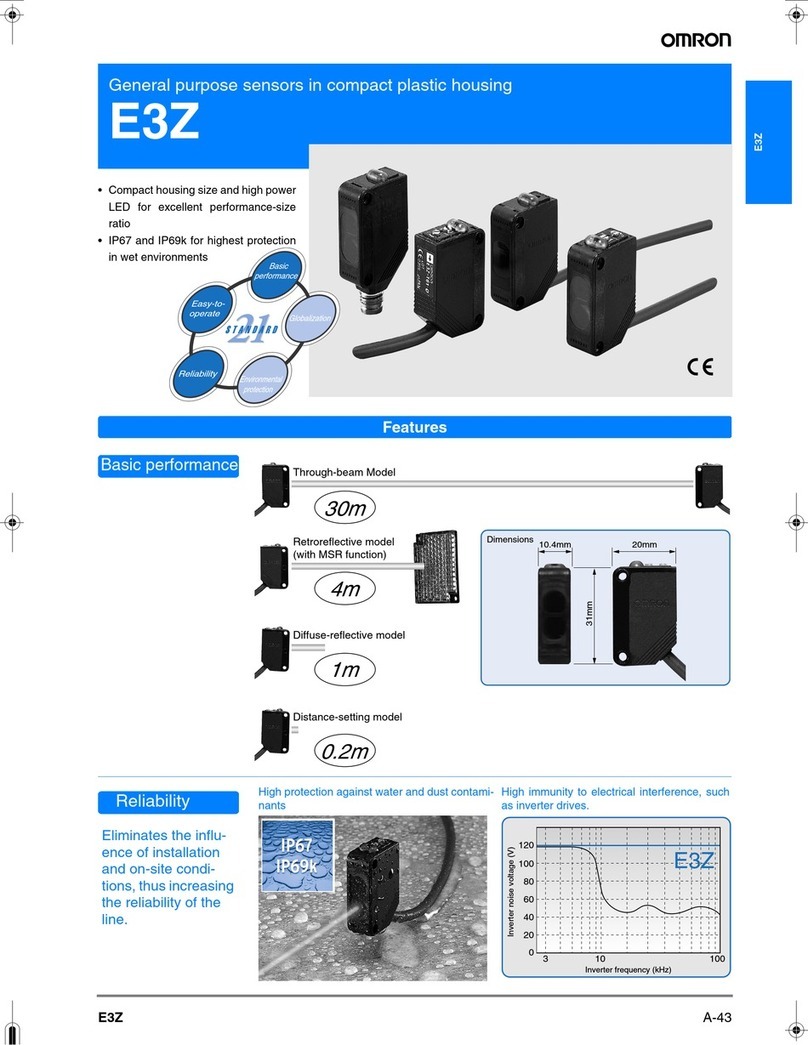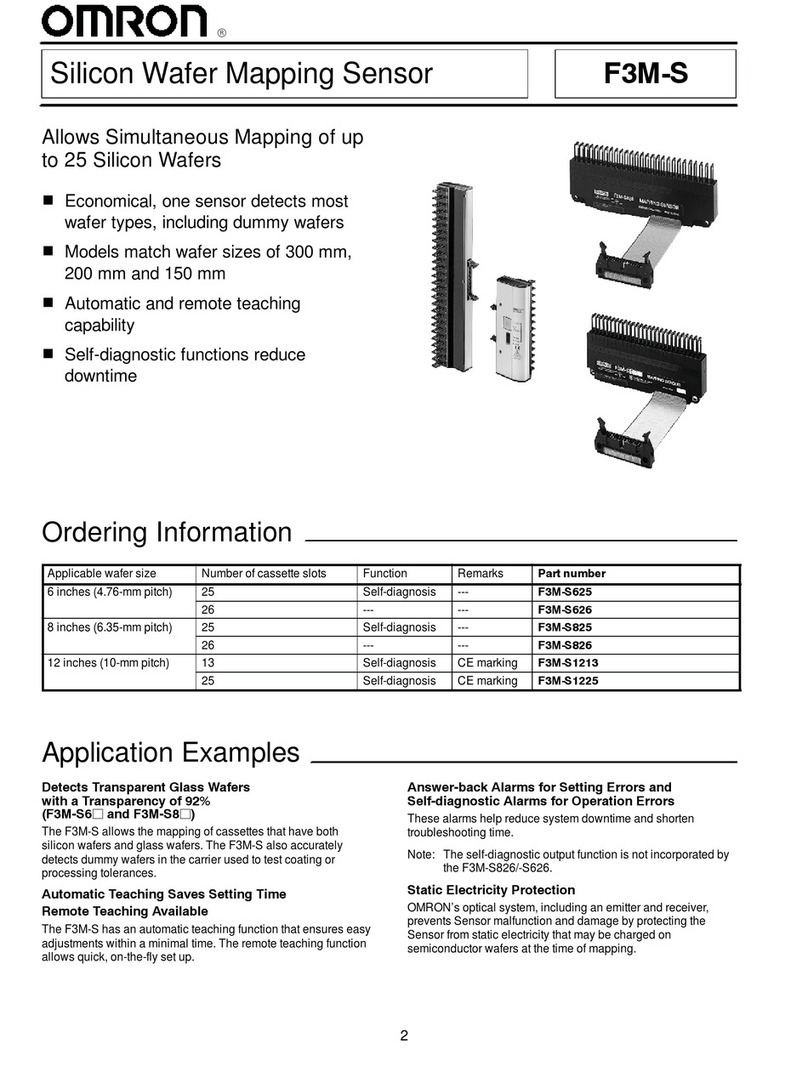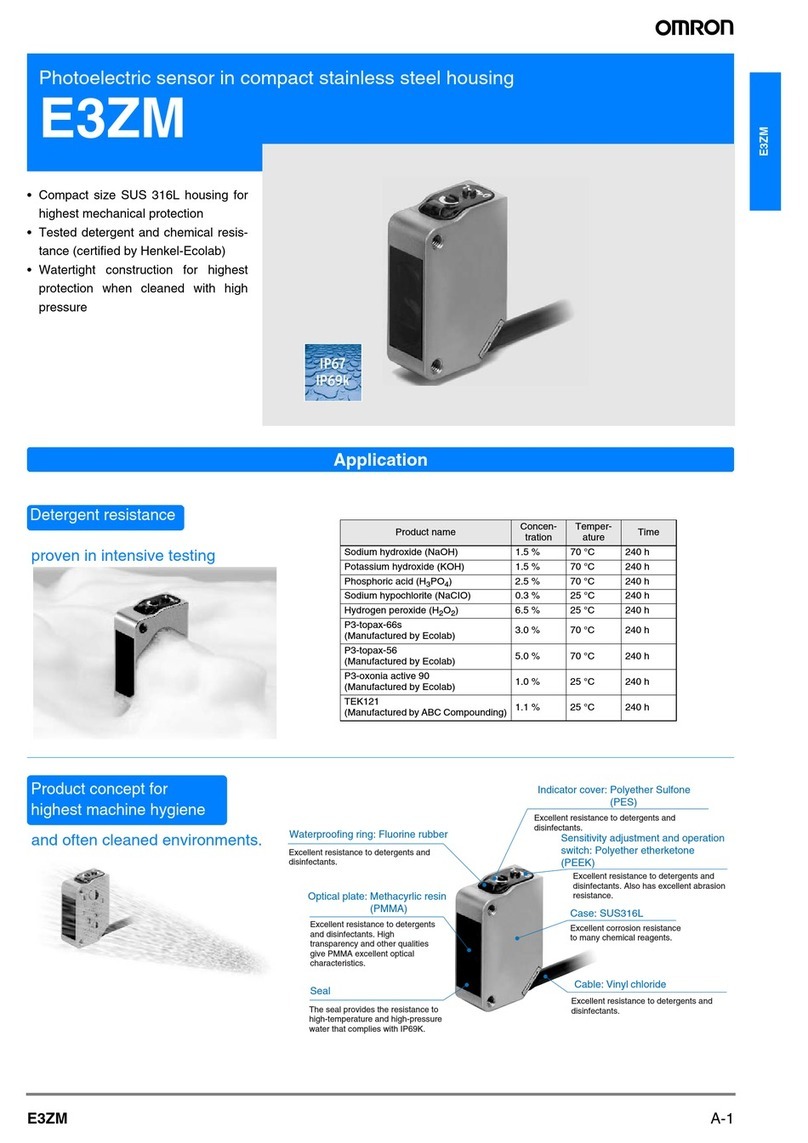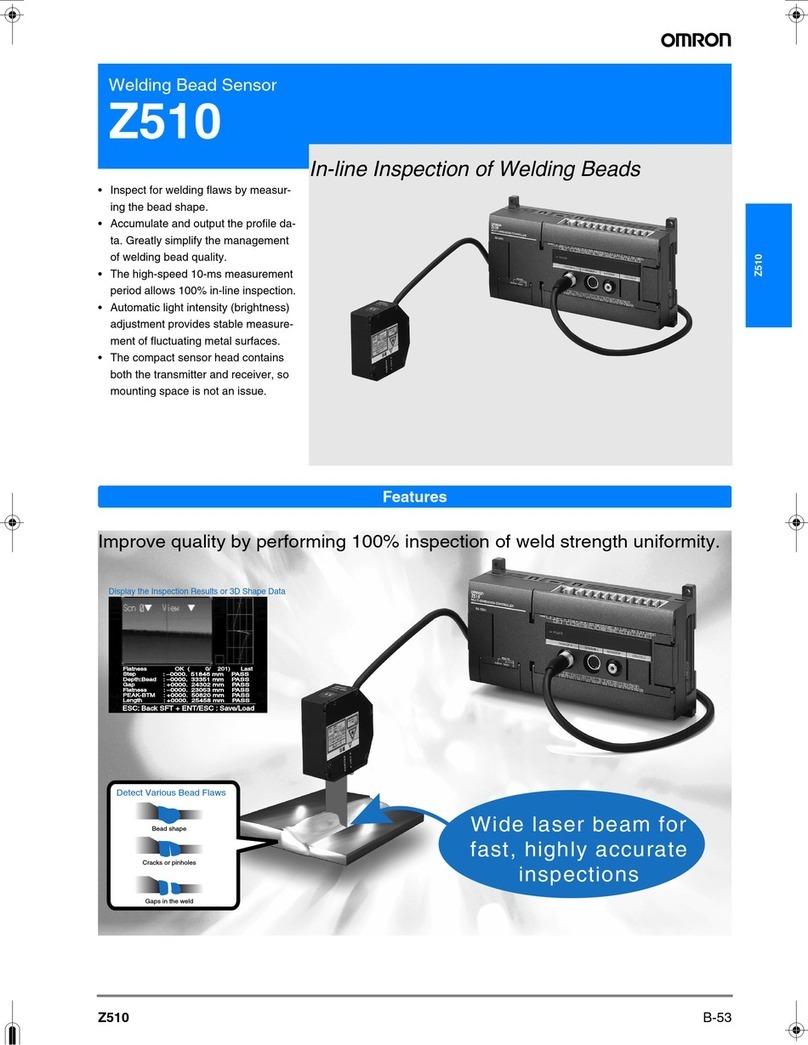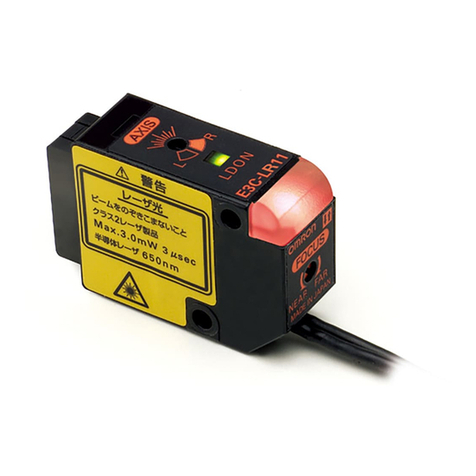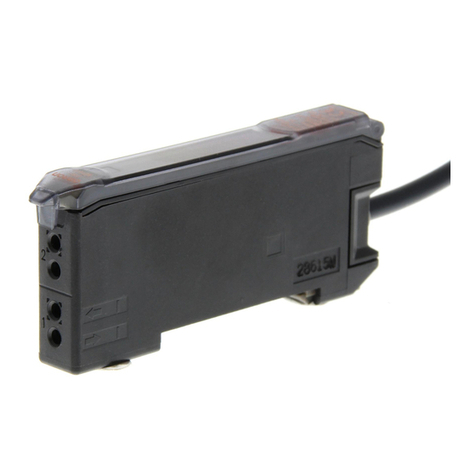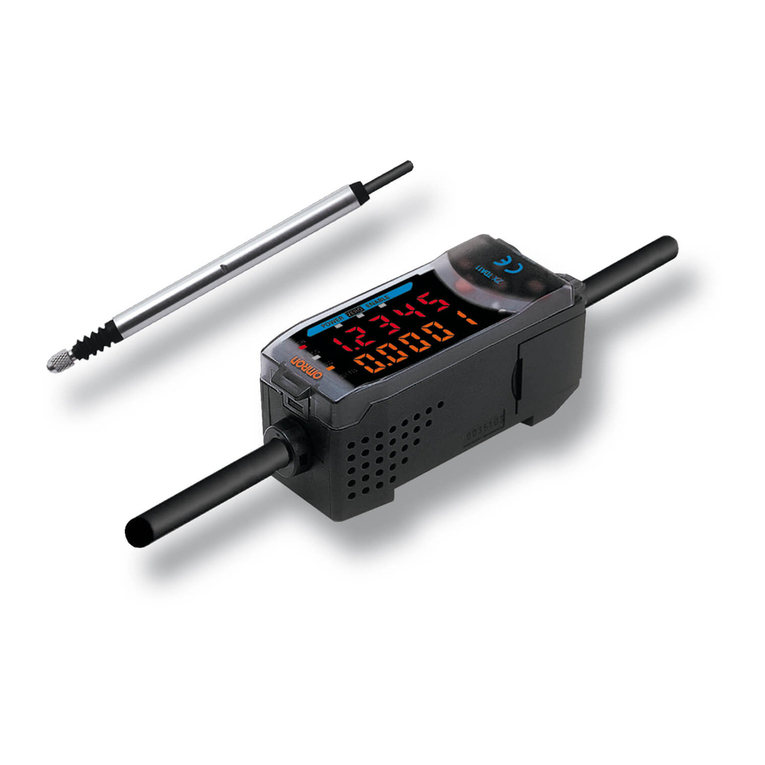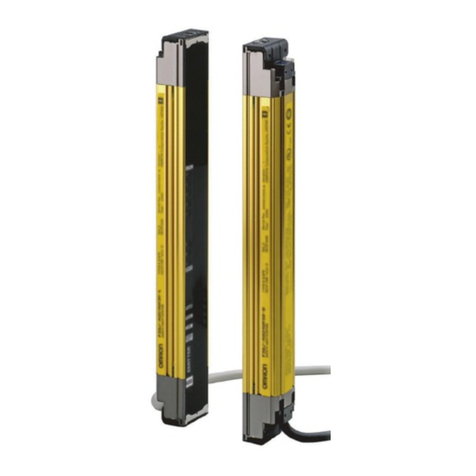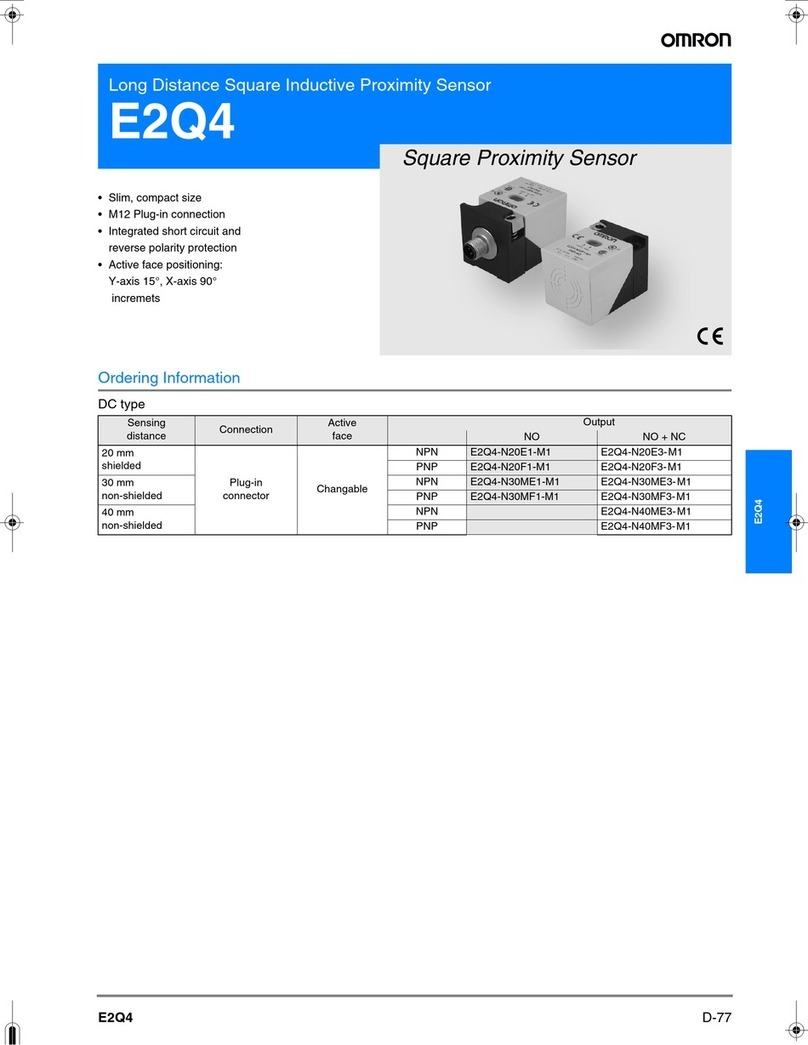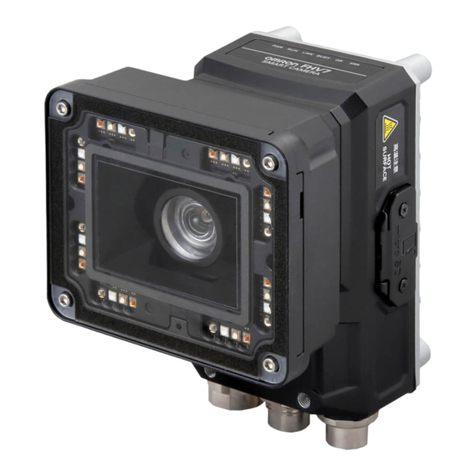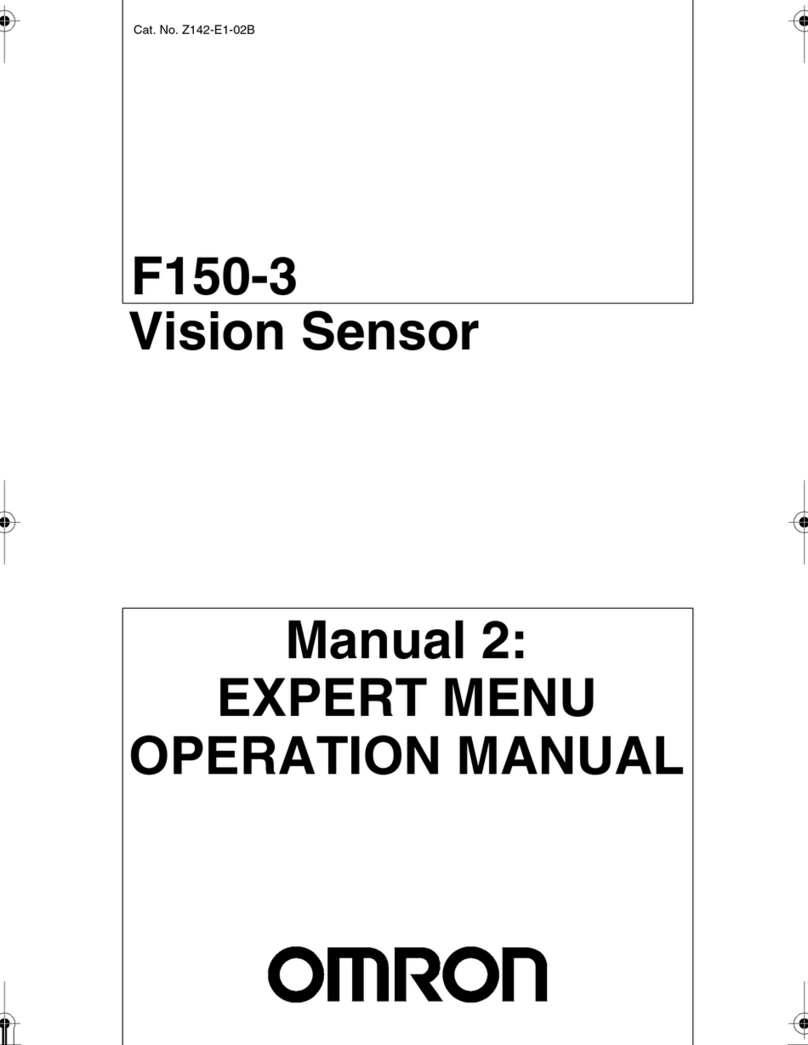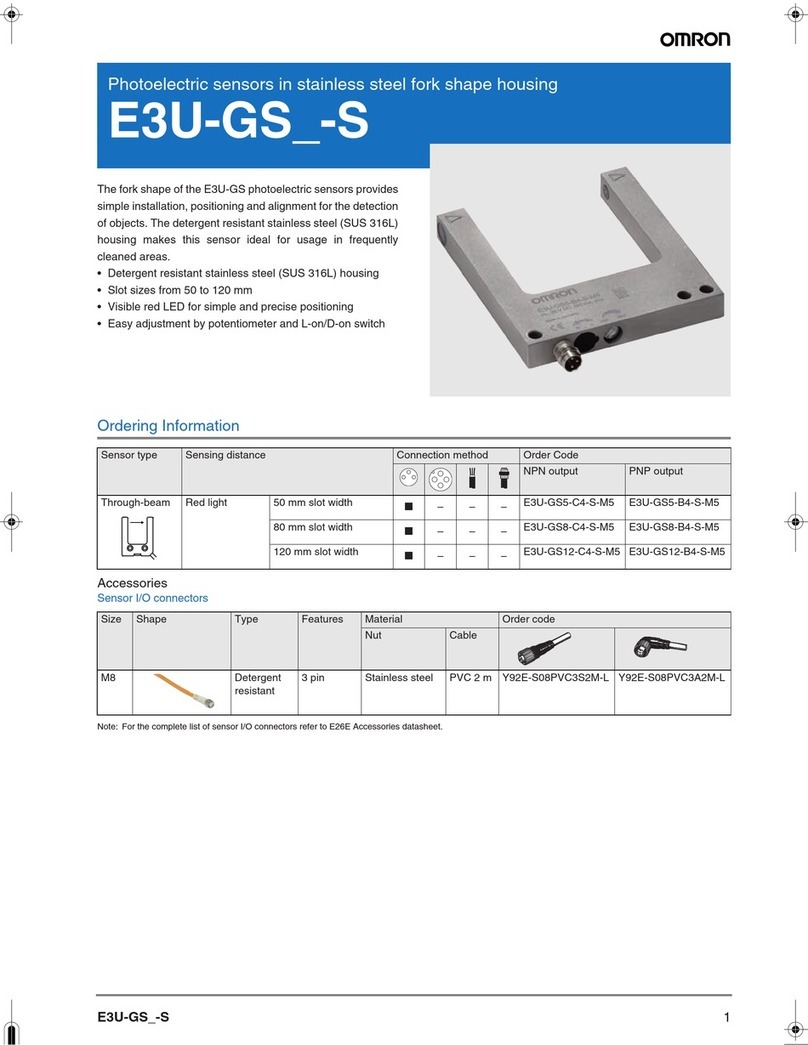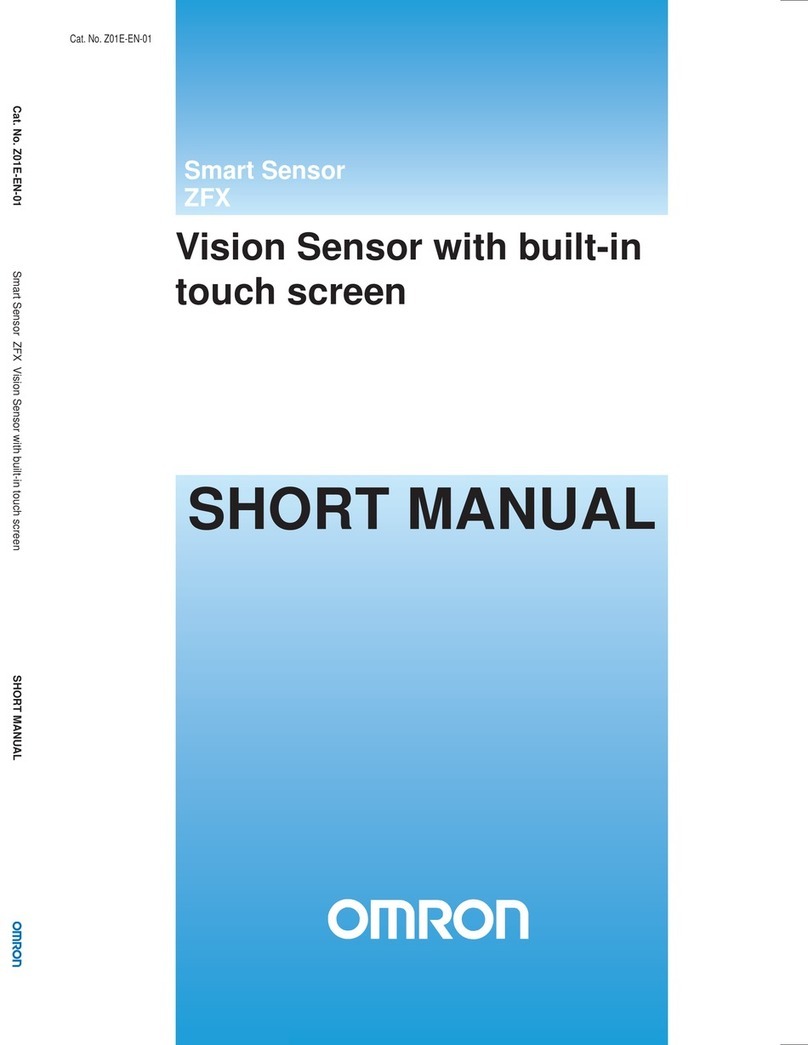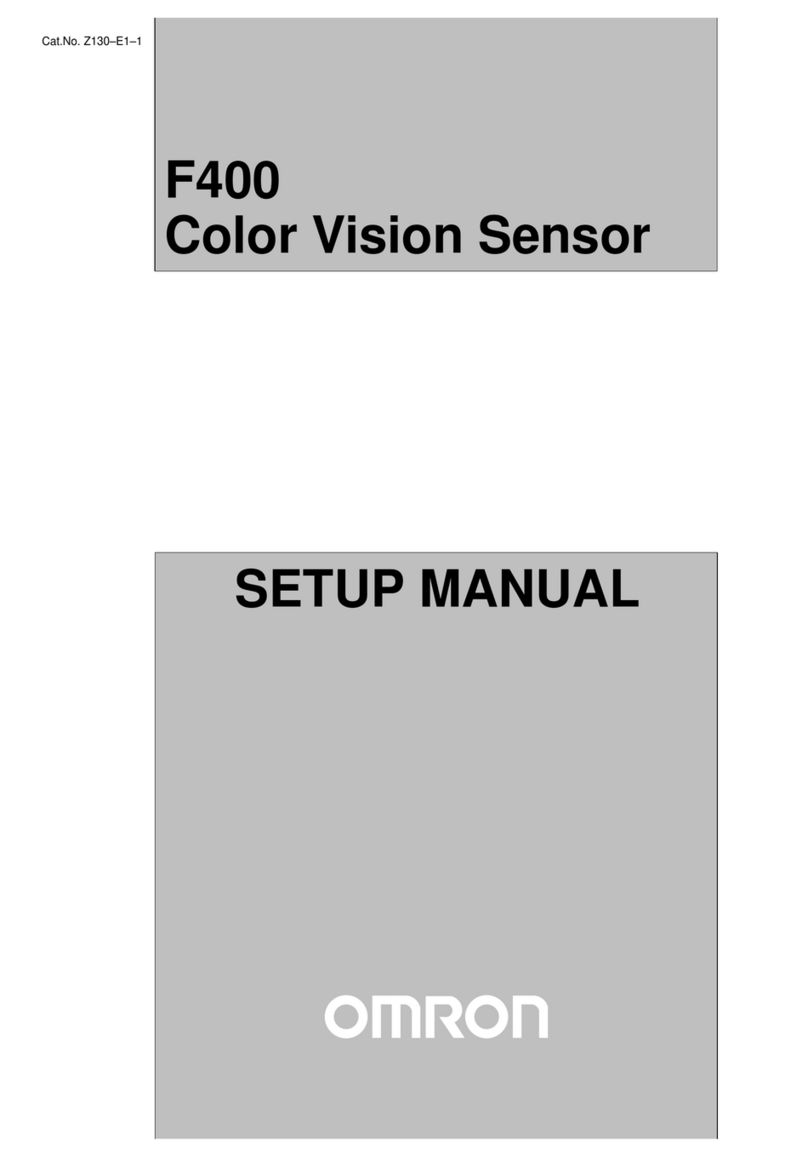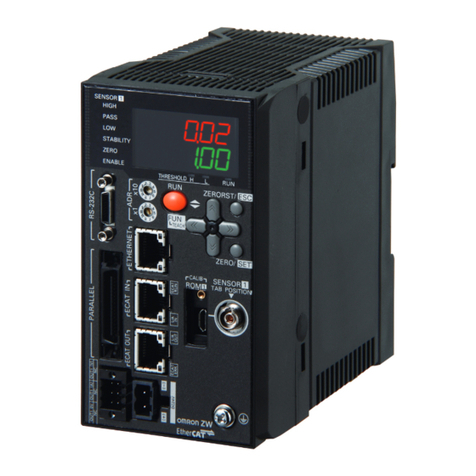
E3S-C E3S-C
REPLACEMENT PARTS
Description Part Number
Mounting bracket for E3S--C
1
(horizontal) E39-L102
Mounting bracket for E3S--C
6
(vertical) E39-L103
Reflector (supplied with retroreflective sensors) E39-R1
Specifications
Part number E3S-CT11
E3S-CT61
E3S-CT16
E3S-CT66
E3S-CR11
E3S-CR61
E3S-CR16
E3S-CR66
E3S-CD11
E3S-CD61
E3S-CD16
E3S-CD66
E3S-CD12
E3S-CD62
E3S-CD17
E3S-CD67
Method of detection Through-beam Polarized
retroreflective Diffuse reflective
Supply voltage 10 to 30 VDC,
10%
Current consumption 50 mA max. (emitter and
receiver) 40 mA max.
Sensing distance White mat paper 0to30m
(0 to 98.43 ft) 0to3m
(0 to 9.84 ft) 0to70cm
(0 to 27.56 in) 0to2m
(0 to 6.56 ft)
With accessories 4-mm slit: 15m
2-mm slit: 7m
1-mm slit: 3.5m
0.5-mm slit: 1.8m
E39-R2: 0 to 4m
E39-R3: 0 to 150 cm
E39-R4: 0 to 75 cm
E39-RSA: 5 to 35 cm
E39-RSB: 5 to 60 cm
___
Minimum object
size 4-mm slit: 2.6-mm dia.
2-mm slit: 2-mm dia.
1-mm slit: 1-mm dia.
0.5-mm slit: 0.5-mm dia.
E39-R1 Reflector:
13-mm dia.
E39-R3: 8-mm dia.
E39-R4: 4-mm dia.
___
Light source Pulse modulated infrared
LED (880 nm) Pulse modulated red
LED (700 nm) Pulse modulated infrared LED (880 nm)
Standard object Type Opaque materials Opaque materials Opaque and transparent materials
Size 9 mm (3.54 in) min. 30 mm (1.18 in) min. 30 x 30 cm (11.81 x 11.81 in) (white mat
paper)
Operation mode Light-ON/Dark-ON operation, switch selectable
Variation in sensing distance --
10% max.
Hysteresis -- 20% max. of sensing distance
Variation in optical axis and mounting
direction
2°max.
Sensitivity Adjustable, 3/4 turn knob Adjustable, 2-1/2 turn knob with clutch
and indicator
Mutual interference protection Not provided Provided
Control output Type NPN or PNP (selectable), open collector current output
Max. load 100 mA max.
Residual voltage NPN output: 1.2 V max., PNP output: 2.0 V max.
Response time OFF 1msmax. 2msmax.
ON 1msmax. 2msmax.
Circuit Protection Output short-circuit protection, reversed polarity protection
Vibration
resistance Destruction 10 to 2 kHz, 1.5-mm double amplitude, or 300 m/s2(approx. 30G) 0.5 hrs each in X, Y, and
Z directions
Shock resistance Destruction 1,000 m/s2(approx. 100G) 3 times each in X, Y, and Z directions


